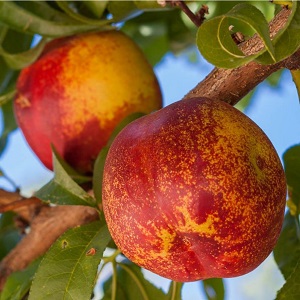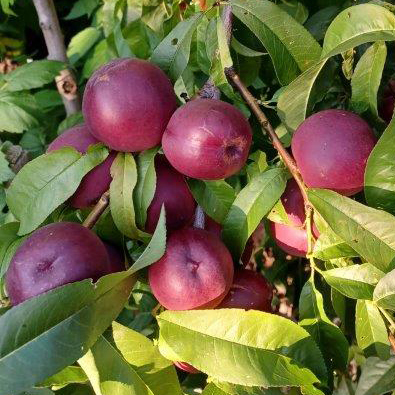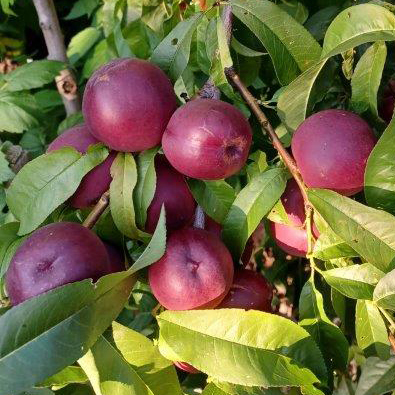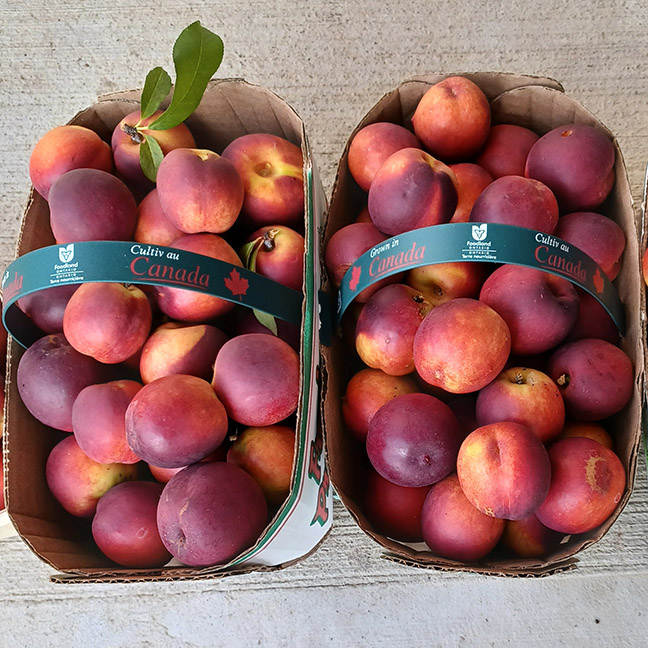Nectarine : HARDIRED Semi-Dwarf (Bailey) (Orchard Grade)
$47.95
An 'orchard grade' is a tree that may be somewhat shorter, slightly crooked, or a bit scratched, or for some other reason is not a perfect front lawn specimen. These trees will work just as well in an orchard as a first or number one would, since they still produce the very same fruit.
Our main gripe with Hardired is the spelling of the name. If 'Hardy Red' is what they meant, why not just make it that? But really, aside from this minor wrinkle, Hardired has maintained a solid reputation since being introduced by the Harrow Research Station. Touching taste we quote Micheal Phillips - 'Tree-ripened flavour is pure ambrosia'. Top that! This is one of the few nectarines with sufficient winter hardiness for most of us and still seems as good as any in terms of resistance to the possible peach problems (canker, brown rot, bacterial leaf spot) No resistance to squirrels though! Hardired is extremely productive, so fruit thinning is recommended. Large, showy, pink blossoms in spring are a bonus.
SELF-FERTILE | ZONE 5 | HARVEST: LATE AUG.
Only logged in customers who have purchased this product may leave a review.
Growing Tips
Stop! Do not plant your peach or nectarine tree in that sheltered nook of the south side of your house. Although well meant, this very common mistake is almost certain to doom your new tree. Of course extreme cold is hard on peach trees, but the warm noonday sun on a late winter day is actually worse. A dark tree trunk will warm up considerably but then the temperature drops and the bark refreezes. To avoid this fluctuation, look for a planting site in the winter shade (north side) of a building or group of evergreens. In other word, close enough to the building to be shaded from the low winter sun but far enough back to get full exposure in the summertime when the sun is high. The goal is uniform cold so as
not to interrupt dormancy. Some growers white wash the trunks and lower branches of older peach trees in late fall with a cheap interior latex paint to protect from sun damage in winter. Young trees should have trunks wrapped with a light coloured blanket or covering.





Reviews
There are no reviews yet.